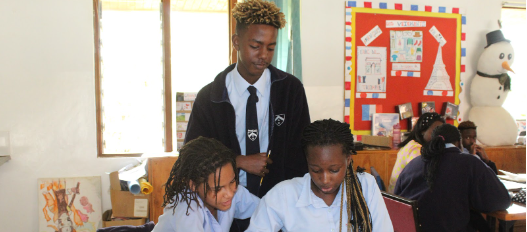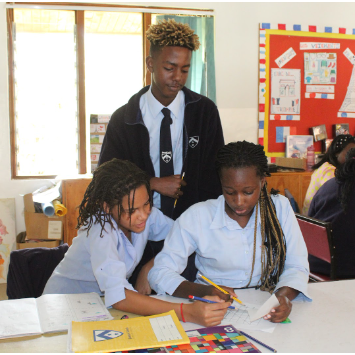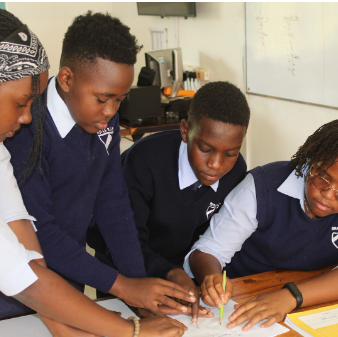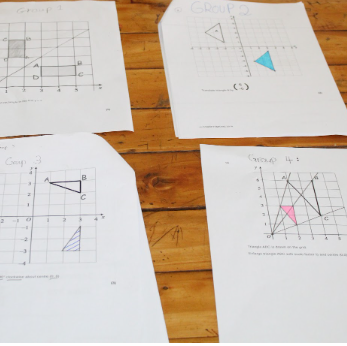Maths in Secondary

26th May 2023
Using Collaboration to Learn Shapes in Maths
Year 8s decided to extend their Maths skills away from playing with numbers to playing with shapes. They did this by exploring the mathematical field of transformation which involves manipulating the shape and/or position of a point, a line or geometric figure. The original shape of the object is called the pre-image or object and the final shape and position of the object is the image under the transformation.
Transformations of shapes in Math can be done through reflection, translation, rotation or enlargement. The students decided to indulge in this enormous Maths concept through group work where each of the groups was to explore one type of transformation.
Group 1: Reflection
Group 1 which comprised Nedra, Aisha V and Joseph tackled reflection. Joseph explained reflection to his teammates as a flip on a line called the mirror line or the line of reflection (in a layman’s language - what you see when you look at yourself in the mirror). They challenged themselves by reflecting a rectangle in the line y=x (in this line all the x and y coordinates are the same). To avoid making mistakes, they used a tracing paper and this was their result.

Group 2: Translation
Group 2 consisted of Precious, Prince, Harshith, Fraja and Abigail K who explored translation as a type of transformation. This moves every point in a figure the same direction. Harshith was quick to mention that this is the only transformation where direction is maintained apart from keeping the shape congruent (same size, same shape). Fraja also pointed out that when translating a shape you start with the horizontal movement (x) followed by the vertical movement (y), the same way in real-life, you crawl before you walk. They challenged themselves by translating a triangle using vectors and this is what they came up with.

Group 3: Rotation
Group 3 consisted of Abigail, David, Roy and Michelle and tackled rotation. Michelle explained to his teammates that this involves taking each point in a figure and rotating it a certain number of degrees around a given point either clockwise or anticlockwise. David added that for correct rotation to be done, a tracing paper was necessary. They challenged themselves by rotating a triangle 90° clockwise from the origin (the point 0,0) and this is what they came up with

Group 4: Enlargement
Group 4 consisted of Loise, Aisha Fameen, Hawi and Amara who explored on enlargement. Hawi was quick to point out that with enlargement we change the size of the original shape to make it bigger or smaller by multiplying it by a scale factor. They challenged themselves by enlarging a triangle with a fractional scale factor and this is what they came up with.










